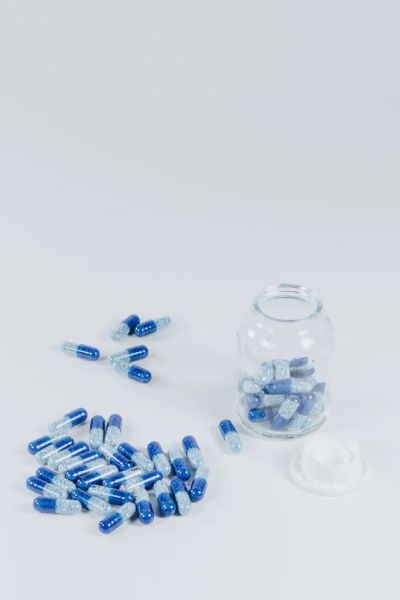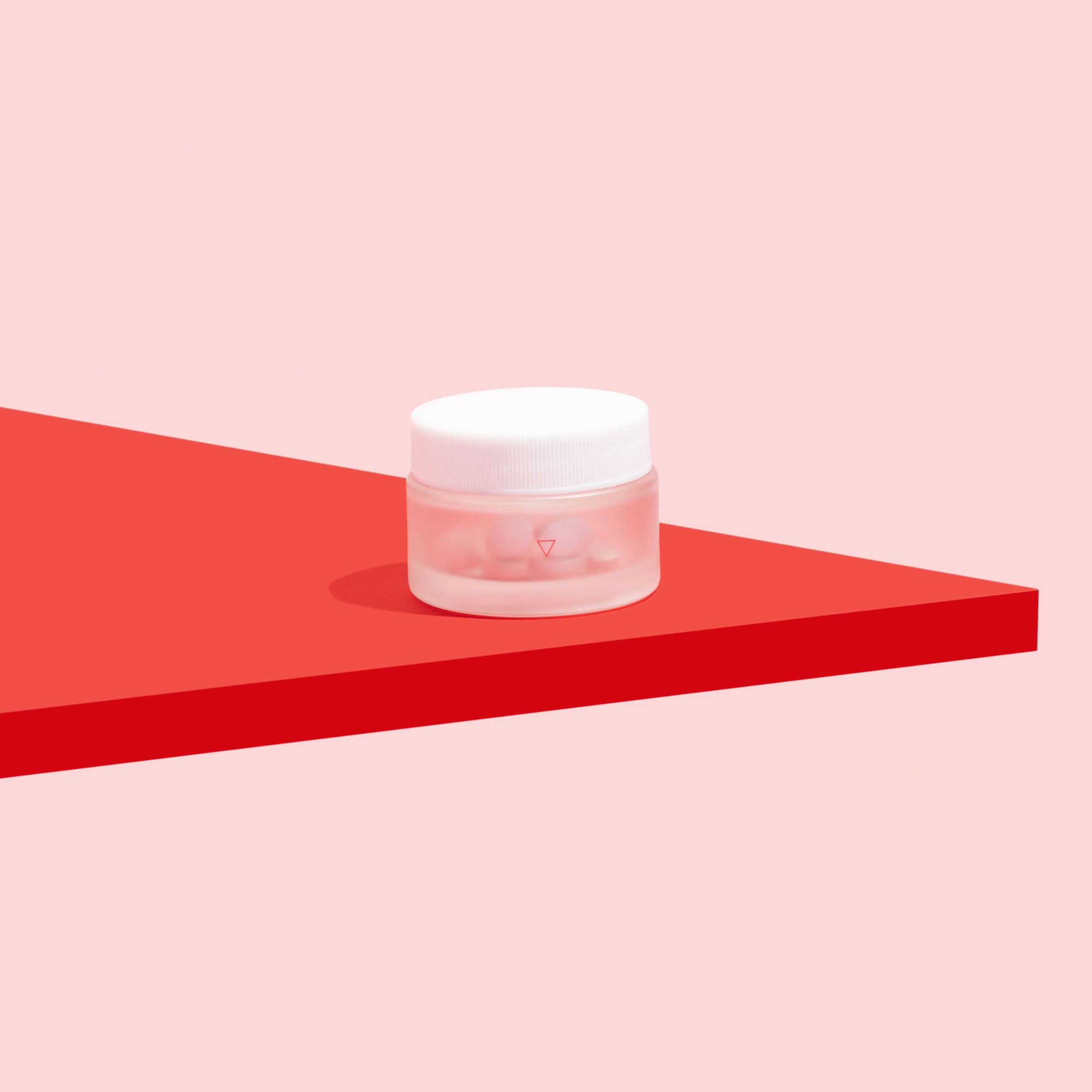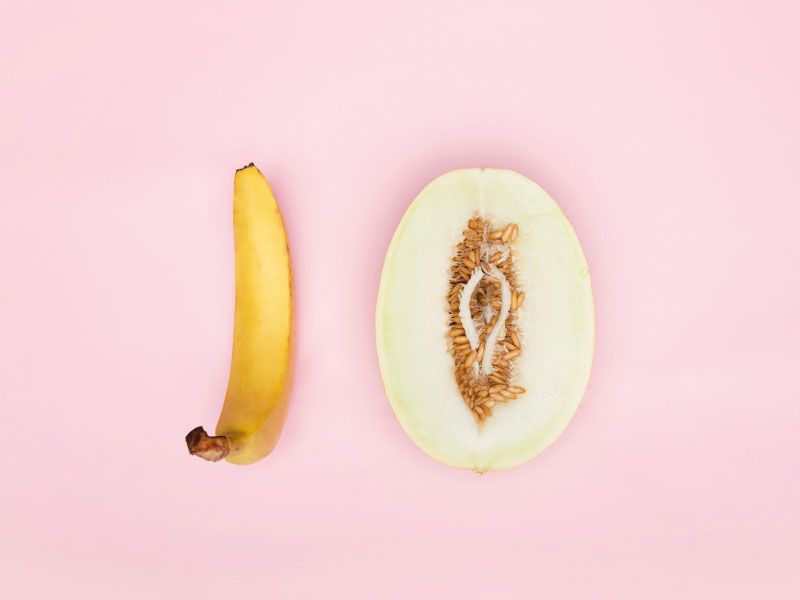
Can Antibiotics Cause
Yeast Infections
Published on May 3, 2021
Updated on May 19, 2025
Written by Kathleen Morrison
Medically Reviewed by Andrea Sleeth WHNP-BC, MSCP
Antibiotics are amazing when you need them, but they sometimes come with a slightly annoying sidekick: a vaginal yeast infection (aka vaginal candidiasis).
It’s not because you did anything wrong, it’s just that antibiotics can shake things up down there. While they’re busy fighting off harmful bacteria, they can also mess with the beneficial bacteria that help keep your vaginal microbiome in balance. When that balance gets thrown off, yeast can throw a little party—and yeah, your body notices.
If you’re feeling itchy, irritated, or noticing a thick white discharge, you’re probably dealing with a yeast infection. Is it uncomfortable? For sure. Is it a big deal? Not really. It’s super common, especially after a round of antibiotics.
How antibiotics can mess up your balance
(And why getting yeast infections after meds is way more common than you think)
So, antibiotics? Total game-changers when your body needs backup. But while they’re busy kicking bad bacteria to the curb, they can also accidentally mess with the good guys—especially the friendly bacteria that keep your vaginal ecosystem feeling balanced.
Your vagina is basically its own little world, with a crew of bacteria (mostly the much-needed Lactobacillus) that keeps everything in check.
When antibiotics come into play, they don’t really differentiate. That means those helpful bacteria might also get wiped out, giving yeast in the form of the Candida fungus a chance to do its thing, and not in a fun way.
But not everyone who takes antibiotics ends up with a vaginal yeast infection. Bodies are different, and your experience might vary. Still, knowing the link can help you tune in to what’s going on and take care of yourself if symptoms pop up (think itchiness, irritation, or that thick white discharge).
So, no, it's not a sexually transmitted infection. Calm down.
Who can get a Yeast Infection from antibiotics?
Honestly? Anyone.
If you're on antibiotics, a fungal infection can show up uninvited, but some folks might be more likely to experience it than others. Knowing what ups the chances helps you keep an eye out and stay in tune with your body.
Some common risk factors that can make vaginal yeast infections more likely while on antibiotics: Long or frequent rounds of antibiotics (often leading to antibiotic resistance)
- A history of yeast infections
- A weakened immune system
- Having diabetes
- Being pregnant
- Using hormonal birth control pills
- Using scented products like douches or perfumed soaps
Everyone’s body is different, and this isn’t about doing anything “wrong.” It’s just about having the info you need to make choices that work for you.
What about men and kids?
Yep, they're in the yeast club too (and no, it’s not weird). While most vaginal yeast infections show up in women (duh), men and kiddos can get fungal infections after antibiotics as well.
In men, yeast can cause itching, irritation, or redness, especially if they’re uncircumcised.
Kids? They might get diaper rashes or oral thrush (little white patches in the mouth that can make feeding uncomfortable for babies). It’s common, it's manageable, and it doesn’t mean anything about you or your hygiene.
If you or your little one starts feeling off while on antibiotics, it's absolutely okay (and recommended) to check in with a provider.
How do I know it's a Yeast Infection?
If you’ve ever started antibiotics and suddenly thought, “Why is everything down there feeling… off?” no surprises there. But is it what you think it is?
Here are some common signs to keep on your radar:
- That unmistakable itch that just won’t quit
- Burning when you pee or during sex (ugh)
- Redness, swelling, or general discomfort around the vulva
- A thick, white, kinda cottage cheesey discharge
- Or sometimes, just an increase in watery discharge that feels unusual for you
- General vaginal irritation
Most of the symptoms of a yeast infection will pop up within a few days to a week after starting antibiotics if they're going to show up at all. And hey, if you’re not sure what’s going on down there—that’s okay! You don’t have to figure it all out alone.
You can use our Symptoms Quiz to help you get clear on what’s up and what to do next. No awkward waiting rooms, no judgment—just real answers, fast.
How to stay fresh while taking antibiotics
Sometimes, antibiotics (for whatever reason) are absolutely necessary. But while they’re out there doing their thing, they can also shake things up and make you uncomfortable. So, what can you actually do to keep things feeling balanced while you're on antibiotics?
Here are some easy, no-stress tips to help your body feel its best:
- Only take antibiotics when you really need them (and finish the course like your doc says).
- Skip the scented stuff. No douching, no perfumed soaps, no “feminine” sprays (your vagina is self-cleaning and honestly amazing).
- Wear cotton underwear (cute and breathable).
- Change out of damp clothes ASAP. That includes post-gym leggings and wet swimsuits.
- Wipe front to back—simple but mighty.
- Maybe save the super steamy baths and hot tubs for another time.
- Keep an eye on sugar and super-processed carbs—they’re also yeast’s fave snack.
Let’s talk probiotics
Probiotic supps are full of friendly bacteria that can help support your vaginal balance—especially the Lactobacillus crew, which is super helpful for your vaginal health.
You can get your dose from eating yogurt, fermented goodies (like sauerkraut), or easy supplements. There’s no harm or shame in needing some extra assistance.
These statements have not been evaluated by the Food and Drug Administration. This product is not intended to diagnose, treat, cure, or prevent any disease.
How to treat a Yeast Infection caused by antibiotics
There are a bunch of options to help you feel better in these situations.
Over-the-counter antifungal medication in the form of creams, suppositories, and ointments (with ingredients like miconazole or clotrimazole) can be applied right where you need them to treat yeast infections. They’re easy to use and usually start working within a few days. Sweet relief.
Not feeling better with the OTC stuff? Or just want a more direct route to feeling like yourself again? Prescription-strength antifungals might be the way to go for a vaginal yeast infection.
Definitely reach out to a healthcare professional if:
- It’s your first time dealing with these symptoms, and you’re not 100% sure what’s going on
- You’re not feeling any better after a few days of prescription treatment
- Vaginal yeast infections keep coming back (like, four times a year or more)
- Your symptoms are intense or making daily life hard
- You’re pregnant or have a health condition that affects your immune system
Wisp treatment options are available only after consultation with a licensed medical professional. You should consult with your healthcare provider before starting a new supplement or treatment regimen. Individual results may vary.
Let’s clear it up
Antibiotics are powerhouses when it comes to kicking bacteria to the curb, but sometimes they shake up your body’s natural flow, and that can easily invite in a vaginal yeast infection. (Rude, we know.)
The good news is that once you understand the connection between the two, you’re far better equipped and capable of handling it—whether that means adding probiotics to your routine, swapping in more breathable undies, or treating your symptoms with antifungal meds (like oral fluconazole).
Wisp offers oral and topical prescription treatments you can snag online, no awkward pharmacy chats required.
And if anything feels confusing, uncomfortable, or persistent, don’t wait it out alone. Reach out to a healthcare provider or take Wisp’s Symptoms Quiz to figure out your next move for a fungal infection.
Frequently Asked Questions (FAQ):
How to support your body when taking antibiotics?
One way to help keep things in balance is by taking probiotics, which can assist in maintaining the healthy bacteria in your body. You can also enjoy yogurt with live cultures to give your system a little extra love.
And, of course, only take antibiotics when you really need them; your body will thank you!
How long should a yeast infection last after antibiotics?
Typically, a vaginal yeast infection clears up within a few days to a week after starting prescription antifungal treatment. If things aren’t feeling better, don’t hesitate to reach out to your healthcare provider for some extra support.
What does a yeast infection from antibiotics feel like?
You might notice some itching or burning in your genital area, along with a thick white vaginal discharge. Some redness or swelling of the vulva can also pop up—basically, just not the most fun (but still common) symptoms to deal with.
Will a yeast infection clear on its own?
Some mild yeast infections might settle down by themselves, but it’s always a good idea to get some antifungal meds to get back to feeling your best. Treating it early helps keep things from lingering and causing any more hassle.
This blog post is for informational and educational purposes only and should not be taken as professional advice. Always consult with a qualified professional before making any decisions based on the information provided here.

Diflucan, Generic Fluconazole (Yeast Antifungals)
Prescription antifungals used to treat vaginal yeast infections
Starting at $45.00
Get Started
Vaginal Health Consult
Private, online vaginal health consultation.
One Time Consult $45.00
Get Started

